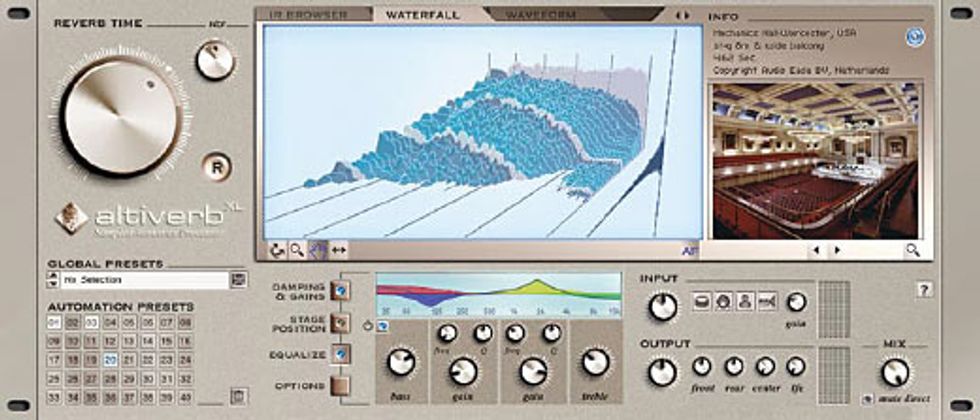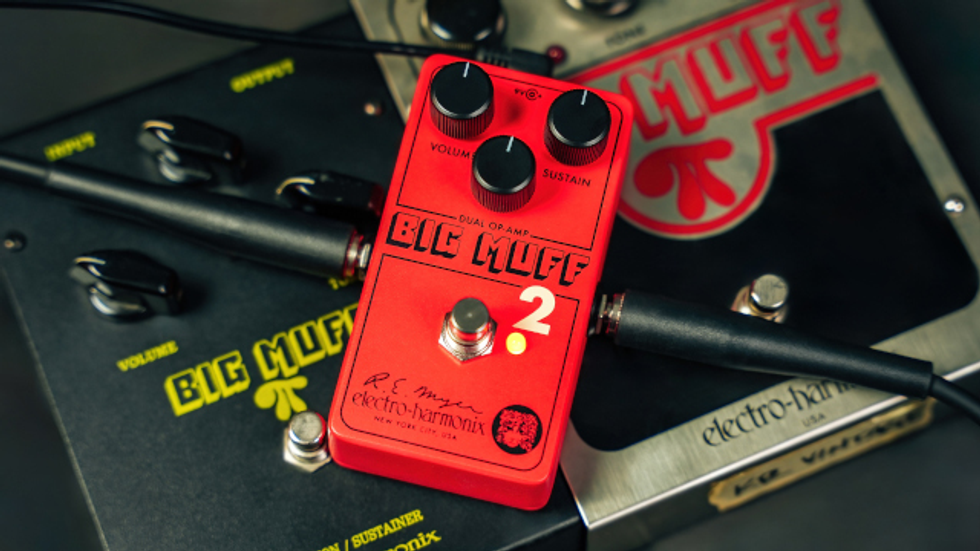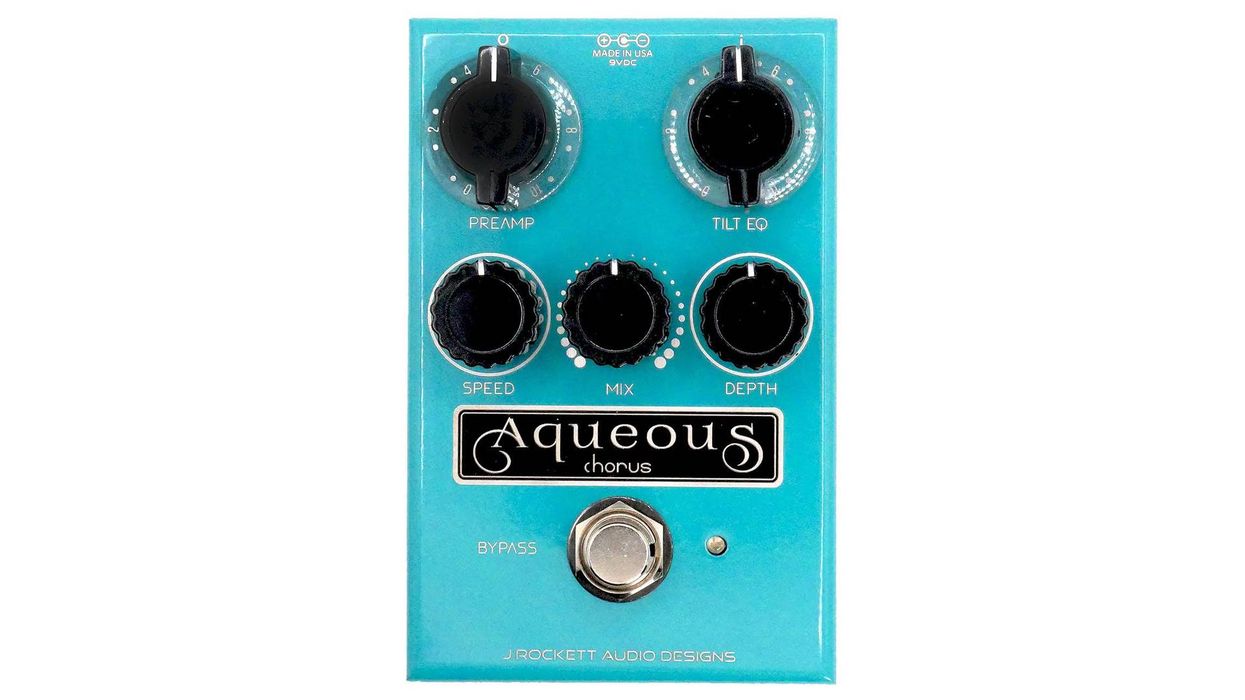 | |
|
This is the first of a two part series exploring the technology of impulse responses and convolution reverbs. Not only are there an amazing array of these reverbs that sound great, but there are now IRs of different speakers from classic amp models. For this column, I’ll focus on the reverbs – next month we’ll cover amps and speakers.
The term “convolution reverb” is being thrown around quite loosely these days as more of these types of products appear on the market. A convolution reverb uses acoustic samples from real spaces, such as halls, churches and studios, or equipment like plates, chambers and classic digital reverbs to create its unique sound. The samples being reproduced are created using a technology called convolution – hence the term, “convolution engine.” Simply put, either a sound “spike” – a cap gun for example – or a full sweep tone from 20Hz to 20kHz is sent into the space or gear you want to capture. Using a microphone array or direct feed, the impulse response of a space is recorded. By using a convolution engine combined with an IR you can have real reverb at your fingertips.
The primary difference between a traditional reverb and a convolution reverb is that the first uses math to simulate spaces. The second uses math to record that actual space and reproduce it for you. But how do we get our hands on these sounds?
The first company to make a hardware convolution reverb was Sony, with their breakthrough DRE-S777. This unit cost around $10,000 and you had to buy a selection of discs to load the different sounds. Sony engineers traveled the globe recording a variety amazing spaces – my favorite is the Concertgebouw in Amsterdam. Yamaha followed suit with their SREV1 sampling reverb, with both units still in use at many studios today.
The mathematical requirements involved in creating good convolution-based impulse responses are massive. When desktop computing became fast enough, Audio Ease released Altiverb, which would only run on the AltiVec processors of certain G4 Macs. Today, Altiverb is on Version 6, running in mono, stereo and surround on TDM Pro Tools for Mac, RTAS, AU, MAS and VST platforms. Starting around $500, what you get for the money is quite a bargain! Other companies making great IR-type reverbs are Waves (IR-1, IR-L, IR-360), Digidesign (TL Space), Tascam (GigaPulse) and McDSP (Revolver). For Logic users, Space Designer is built-in.
What separates one type of product from the other is primarily their samples. Since effort is required to actually record and collect these sounds, the quality can vary wildly. I use different samples from various companies, since mixing tends to require a wide palette of flavors. The only downside is requiring all of the different software!
Many companies have websites allowing you to download new sounds that are constantly being updated. Waves IR users have a huge bank of sounds at acoustics.net. Highlights include Cello’s Studio 1, LX48L samples and the Sydney Opera House. Altiverb users can go to audioease.com and download Wendy Carlos’ own EMT 140 Plate, Notre Dame Cathedral or AMS RMX16 Reverb. Since you are able to record your own samples, notable user Joe Gore has posted his Fender Super Reverb’s IRs in addition to a set from his classic Magnatone amps. I have recorded IRs of amps such as my old Gibson and acoustic spaces like the Mount Tabor performance space in New Jersey, and use them on sessions quite frequently.
Unique and classic sounding reverbs can take a plain old guitar sound and really make it shine. When recording guitars direct using software such as Amp Farm, Amplitude or Eleven, I tend to capture the sounds dry. I then add in some IR-based reverb instead of a modeled sound. Imagine plugging in your Telecaster, dialing up a cool amp and adding real reverb from a Fender Twin. I’m a huge fan of EMT plates, but having a real one in house would be quite the pain. Instead, I simply dial up my favorite 140 or 250 plate to get that vintage sound. Even when capturing real amps or fine acoustics, I like to place them into classic rooms, such as the Stone Room from Masterphonics Studio in Nashville, using Waves IR-1, or Clubhouse Studios in Rhinebeck, New York, via Altiverb.
Convolution reverbs add another dimension to your sound that cannot be replicated by traditional effects. If you haven’t done so already, do yourself a favor and check them out. Your productions will sound better, which can then inspire you to take your recordings to the next level.
Rich Tozzoli
is a producer, engineer and mixer who has worked with artists ranging from Al DiMeola to David Bowie. A lifelong guitarist, he’s also the author of Pro Tools Surround Sound Mixing and composes for such networks as Discovery Channel, Nickelodeon and National Geographic.











![Rig Rundown: Russian Circles’ Mike Sullivan [2025]](https://www.premierguitar.com/media-library/youtube.jpg?id=62303631&width=1245&height=700&quality=70&coordinates=0%2C0%2C0%2C0)










